AIR POWER 2019 - Hinterstoisser AB / Zeltweg / AUSTRIA
Update: 2019/12/25 by Robert Kysela / CHK6
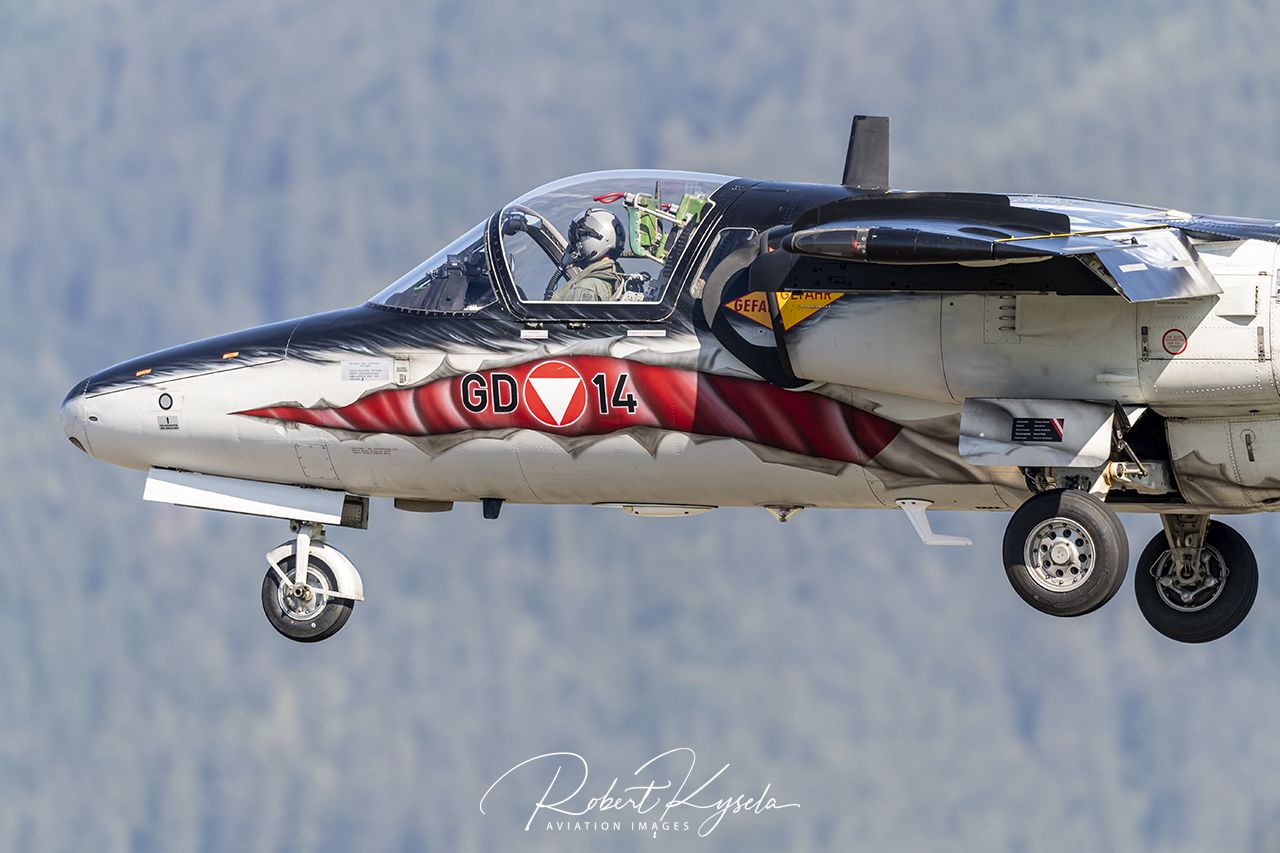
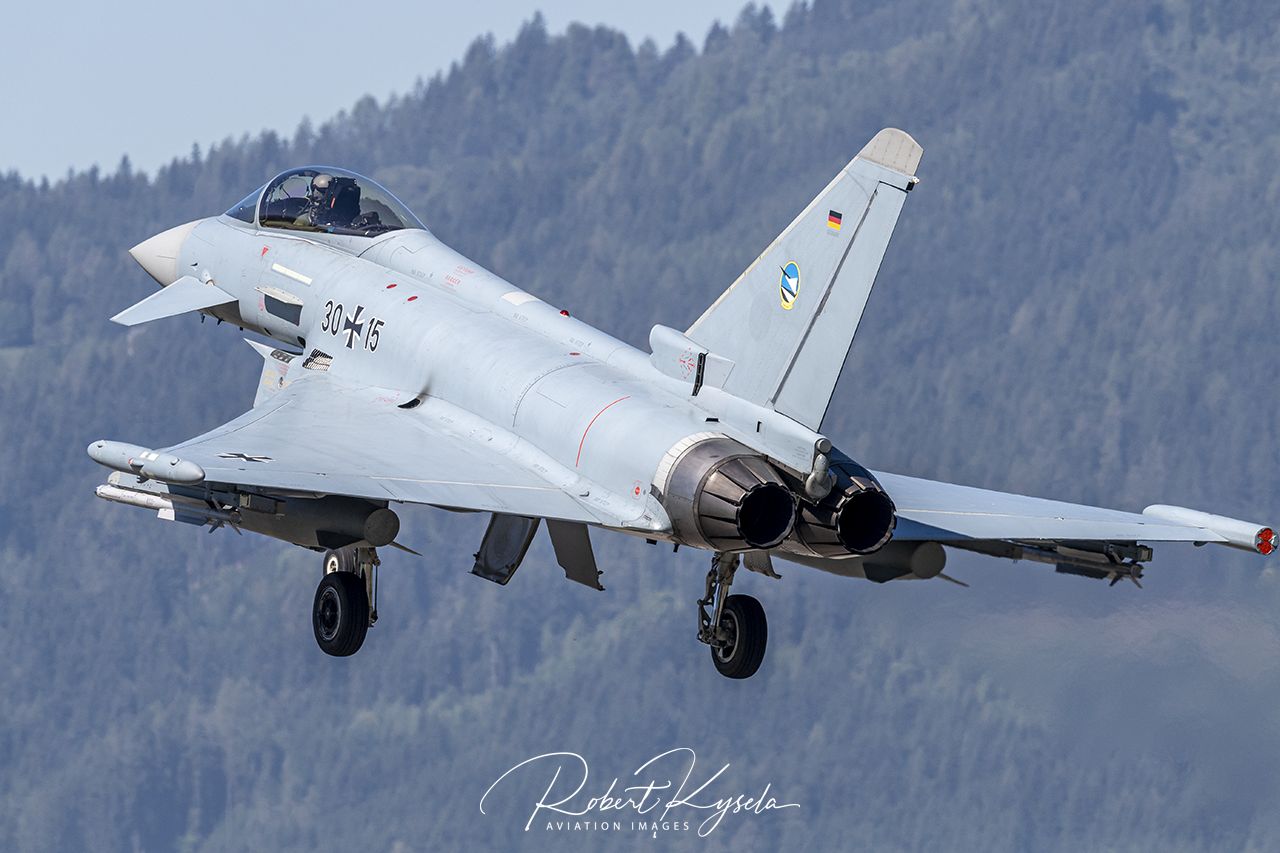
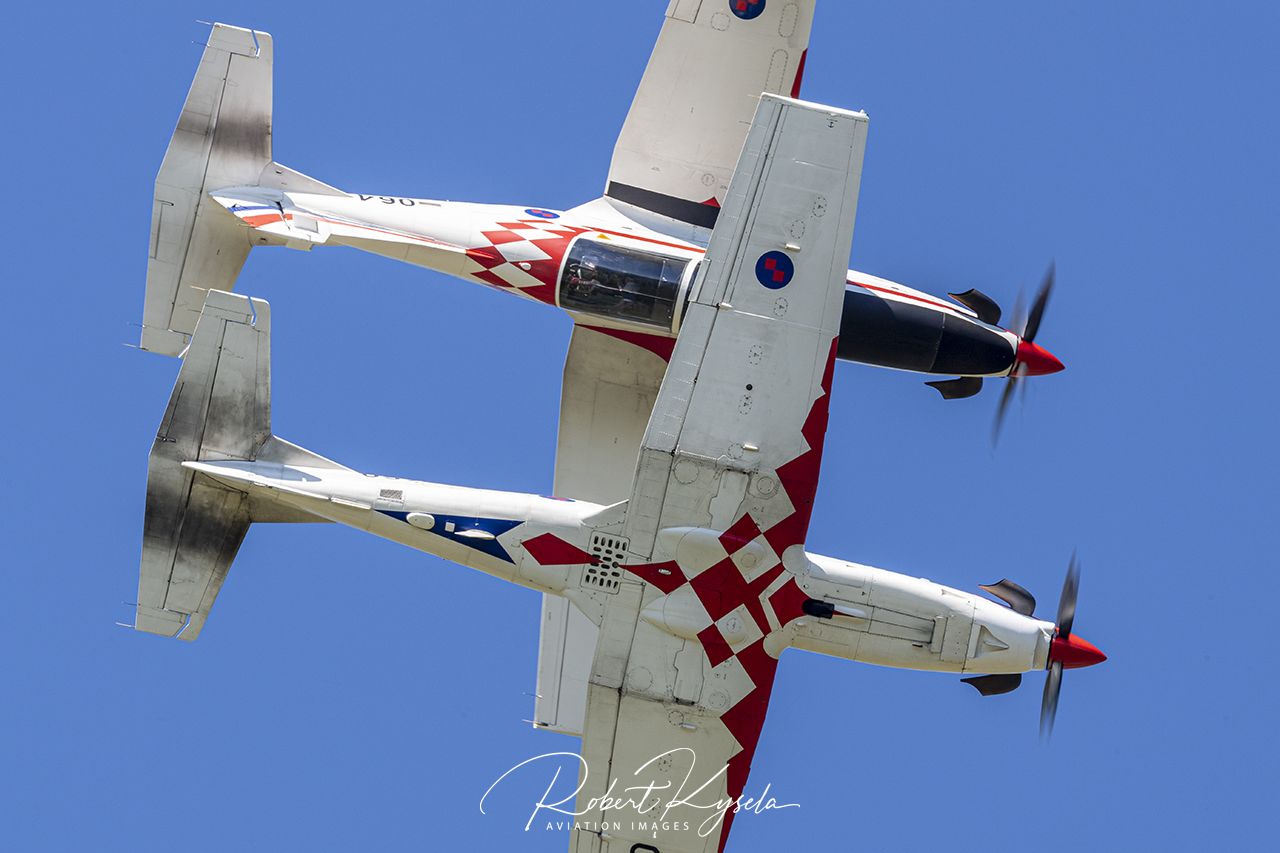
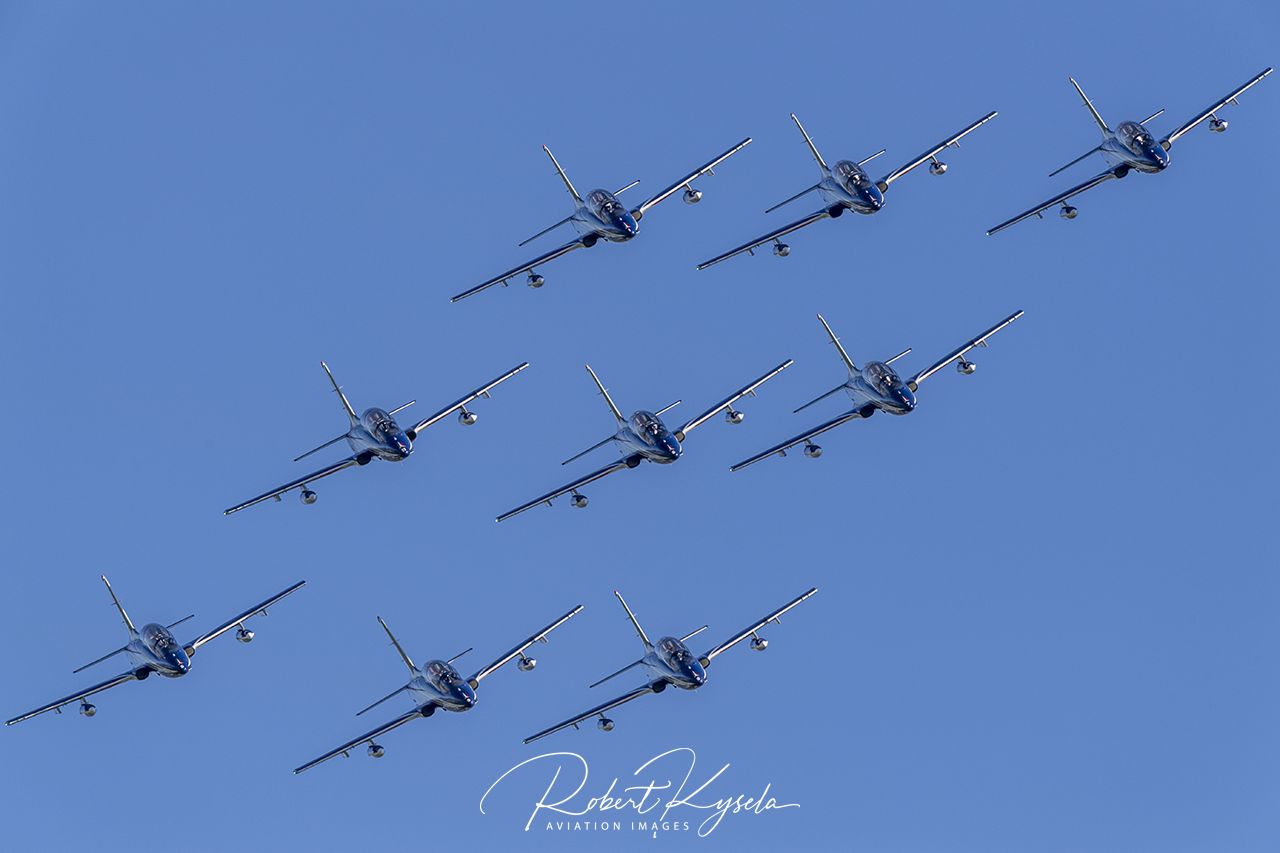
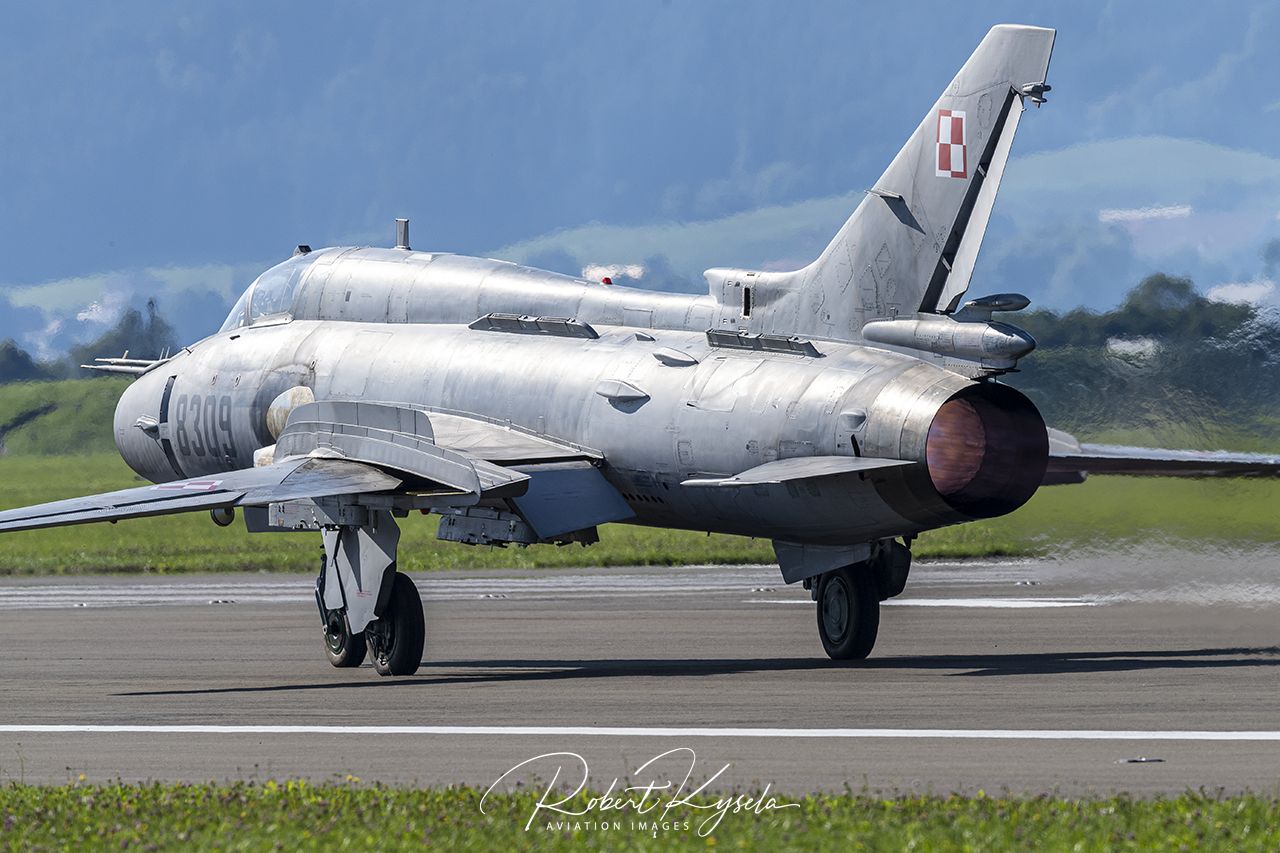
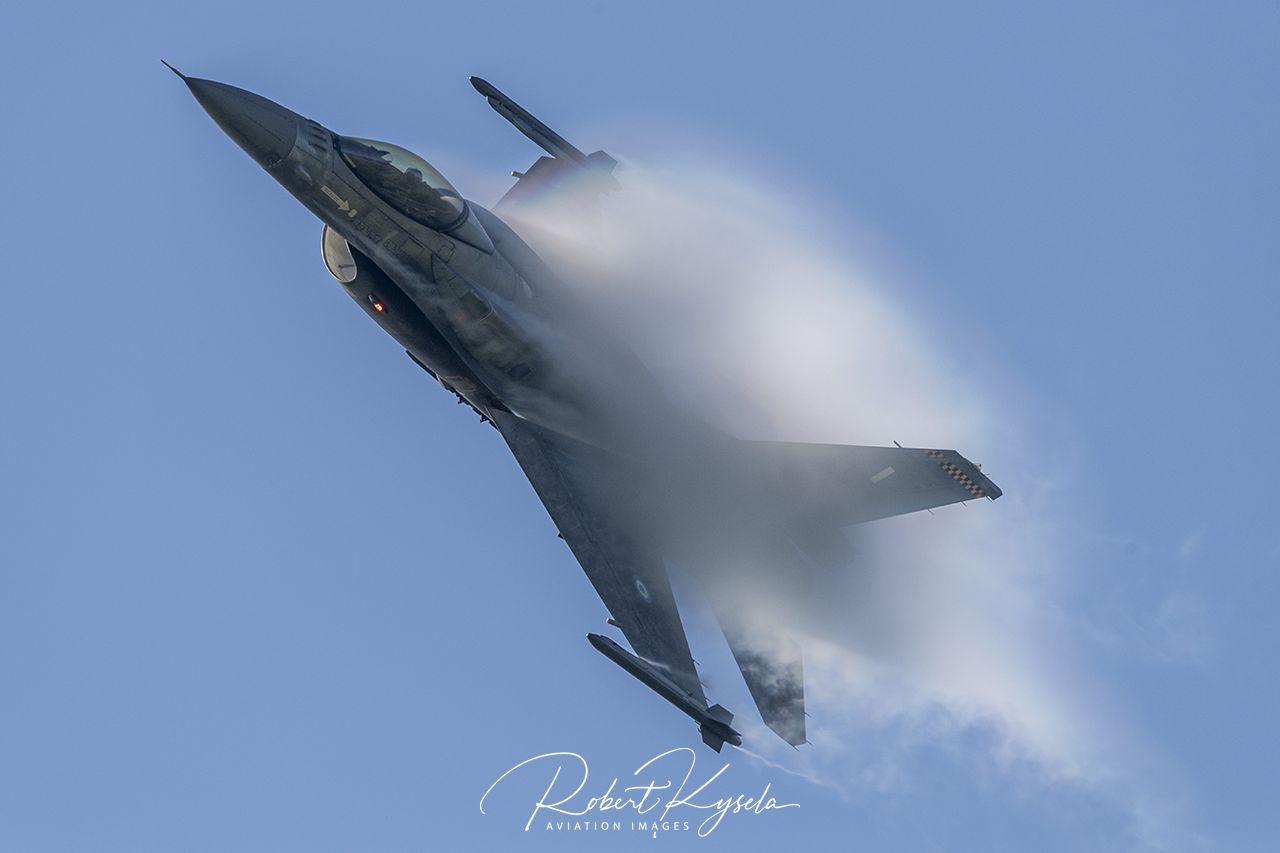
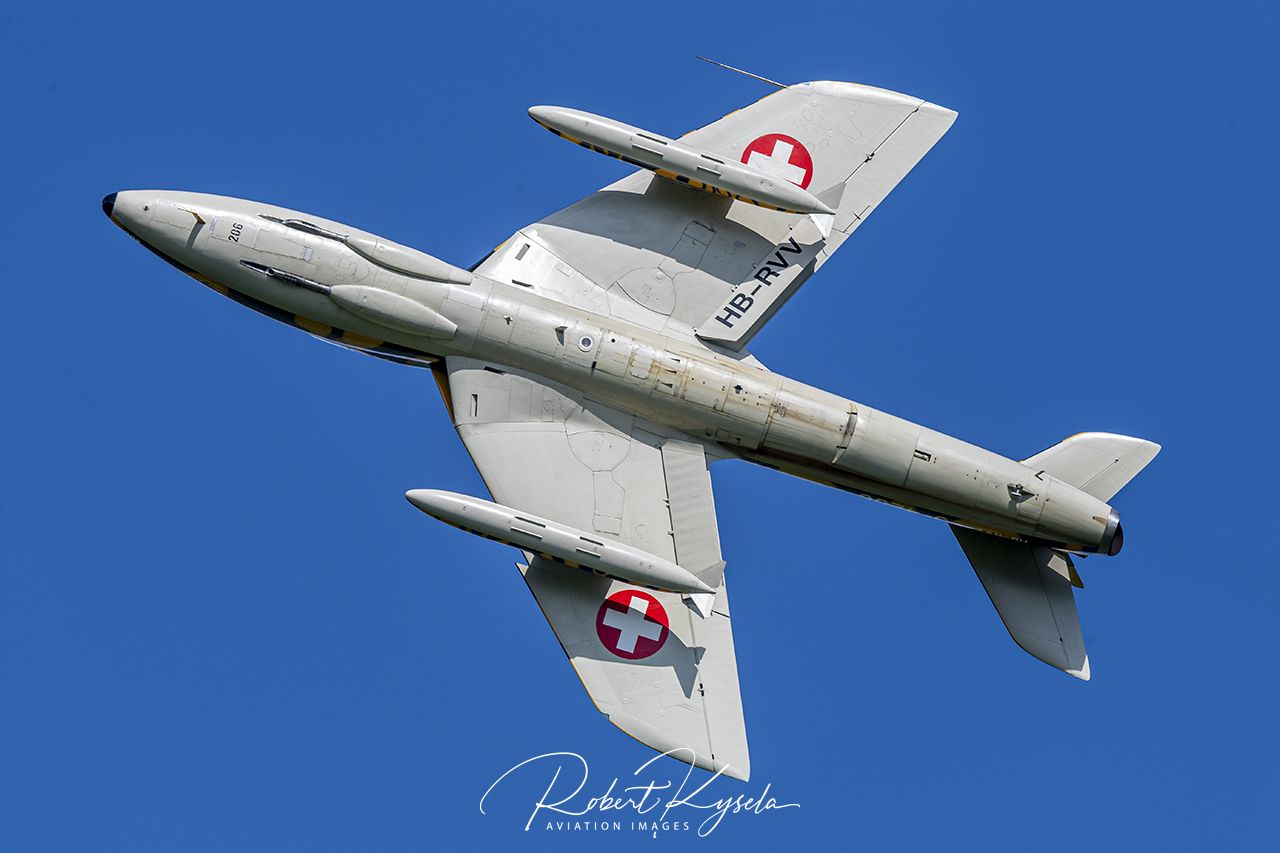
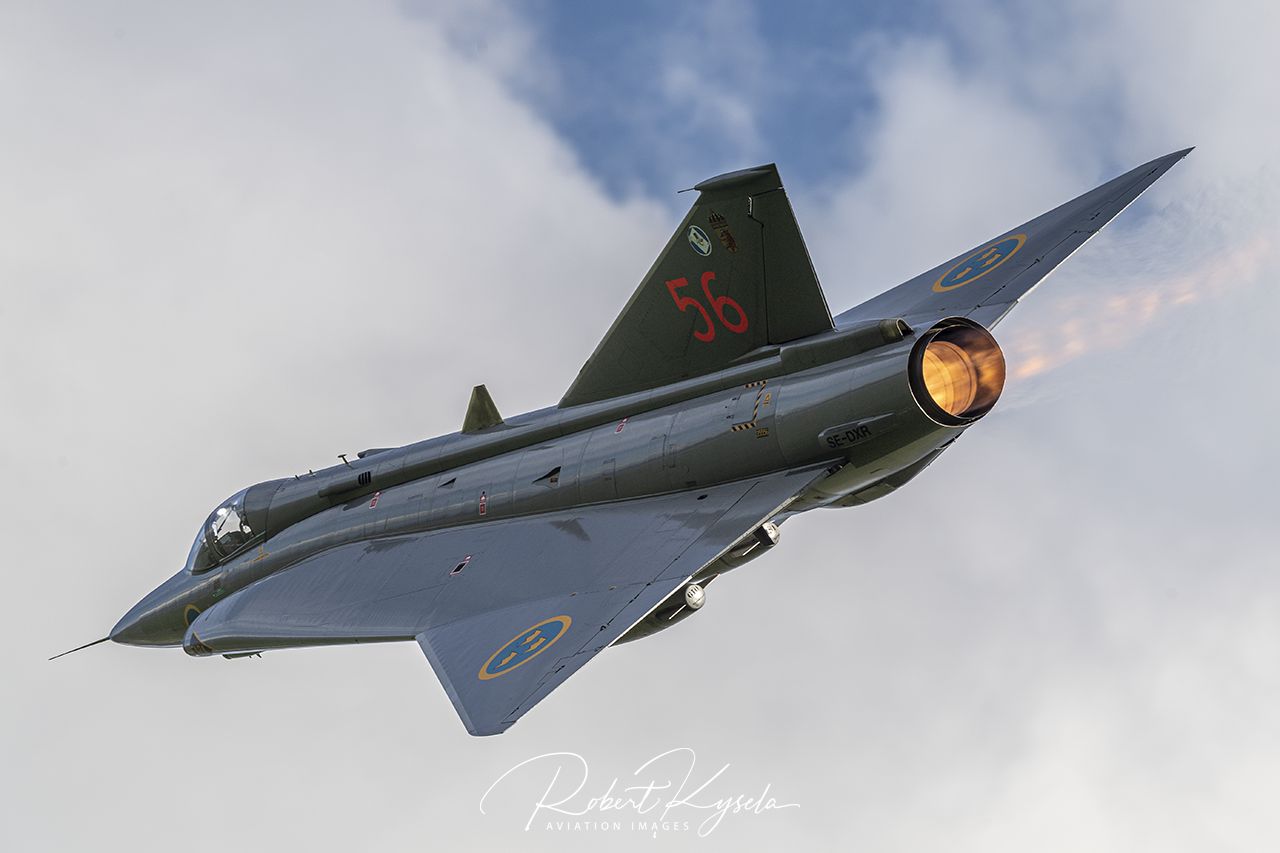
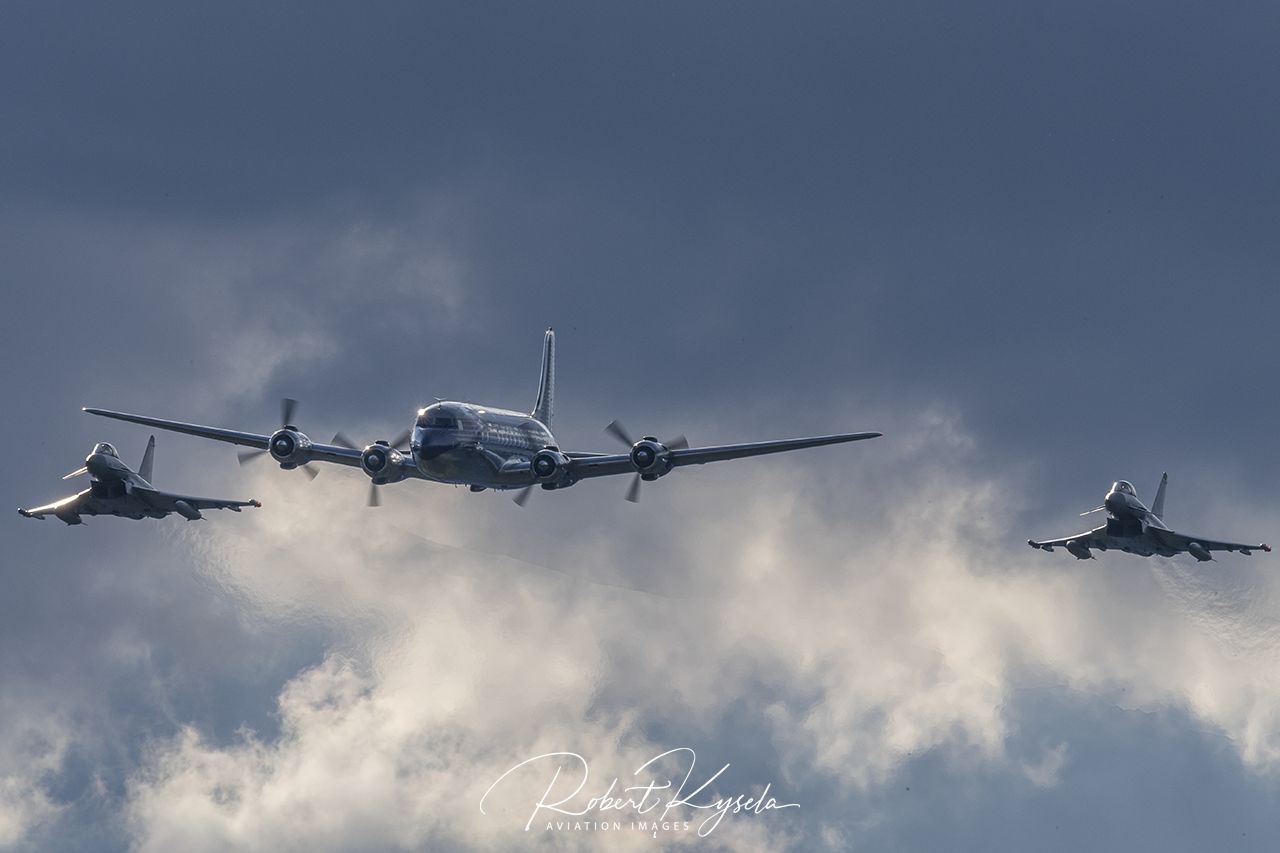
The AIR POWER event of the Austrian Armed Forces has set the benchmark for European air shows with this magnificent show taking place every two to three years since 1997. The number and above all variety of participating aircraft coupled with the beautiful scenery of the Upper Mur Valley and the small town of Zeltweg have attracted countless aircraft fans and enthusiasts from all over the world. This is why expectations at AIR POWER 2019 were set very high. As to whether this year’s event was able to meet these expectations at all was more than vindicated, especially seeing the staging of event itself was on a knife edge due to recent political events. Irresponsible political practices within recent years has led the Austrian Federal Armed Forces into a precarious financial situation and the staging of AIR POWER being questioned by interim Minister of Defence, Thomas Starlinger, who was only recently appointed into office following the last government crisis. Why the Ministry of Defence had decided to hold the event at all is beyond our knowledge. According to rumors however, pressure from the province of Styria as the event’s co-organiser along with the RED BULL company as the events main sponsor was so high (including consideration given to expenses associated with cancellation) that the minister finally gave his ok for AIR POWER 2019 to be held. Just postponement of the event may have provided some form of insight to politicians and above all to the general population regarding the shows precarious future.
All the more amazing was the line-up of aircraft, which all appeared at AIR POWER 2019.
R. Kysela
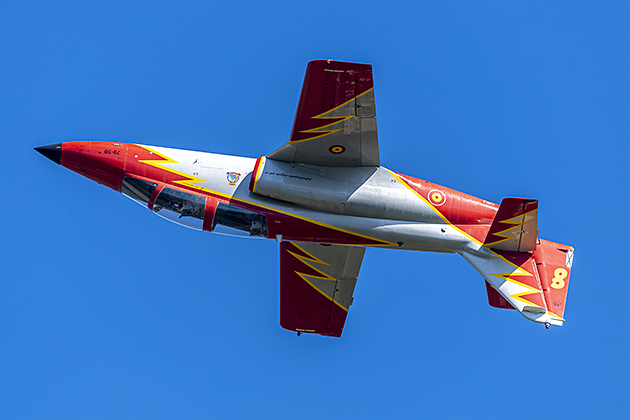
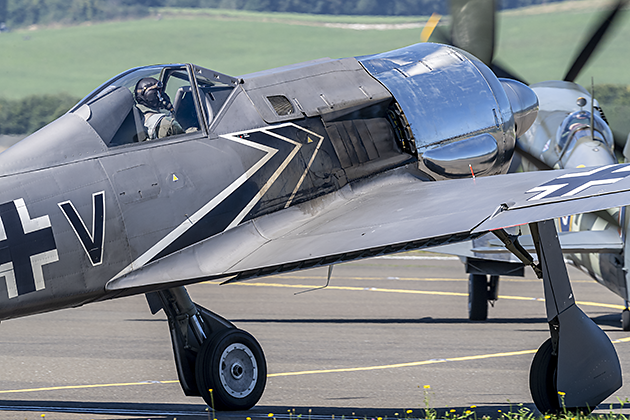
Nevertheless, not only would the great amount of work (not to mention money) gone into the preparation be for nothing, but the numerous enthusiasts and members of the Austrian Armed Forces involved would probably have been bitterly disappointed if the event had been cancelled. Due to the aforementioned difficulties, the initial list of participants was very thin that is until shortly before the start of the show. With the exception of the aircraft of the Austrian Armed Forces, the obligatory vintage aircraft of the Red Bull fleet and a few aerobatic teams, there was not much to see on the shows website prior to August 2019. There was already however a lot of excitement being generated on the various internet forums regarding the show. All the more amazing was the actual line-up of aircraft that appeared at AIR POWER 2019 or to clearly answer the previous question: this year’s AIR POWER has once again proven that it is one of the benchmarks of the airshow scene, one which all other events have to measure up to.
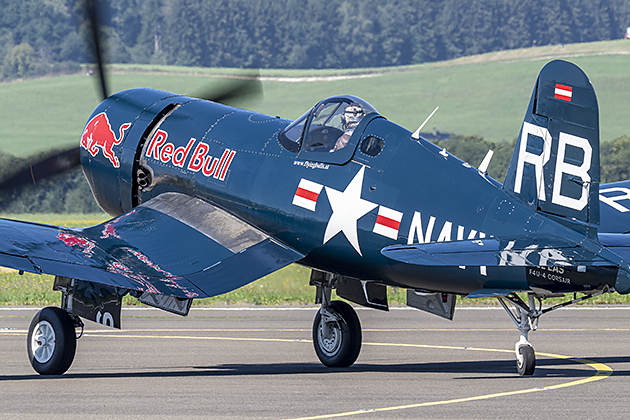
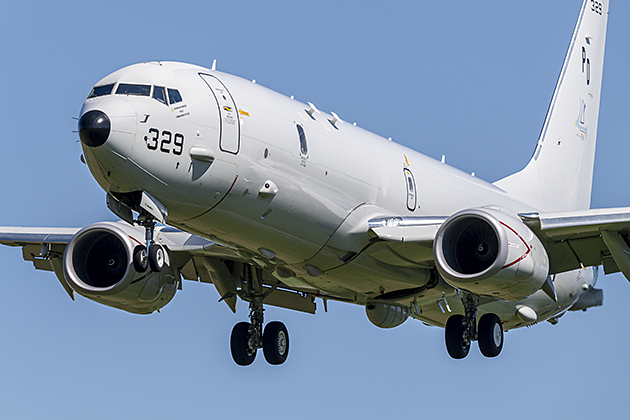
The only downer this time was the relatively bad weather. On the fly-In day (Wednesday, September the 04th) and the training day (Thursday, September the 05th) the weather was perfect, only on the show days during the weekend was it rainy and cloudy throughout with temperatures around 13°Celsius! This didn’t affect the show itself, but for the numerous photographers present the conditions were rather suboptimal, C’est la vie! One thing that even the best organisation cannot plan for is the weather. Speaking of organisation: more than 6,500 soldiers and civilian employees made sure the estimated 180,000 visitors in attendance felt completely comfortable. A special highlight of the AIR POWER events is the so-called SPOTTER package. About 1,000 spotters and enthusiasts had the pleasure to each secure a package which had sold out within a few hours. This not only gave them a reserved parking space in a VIP area and access to the fly-in and training day, but they could also choose between numerous vantage spots (specially selected areas for photographers) around the entire airfield – a service not available at any other airshow worldwide!
Polish Su-22 FITTER´s have been modernized several times to meet increased demands and these updates have proven to be effective at least to some extent
R. Kysela
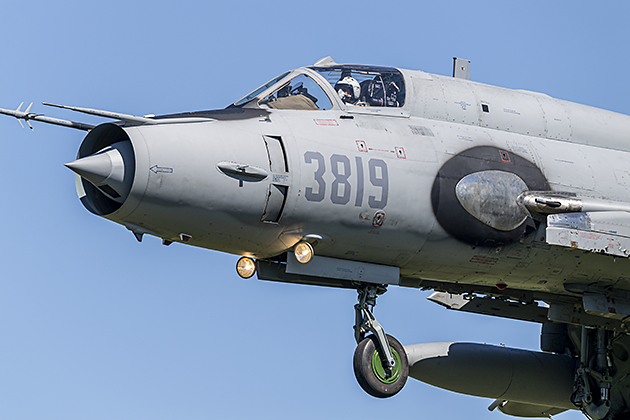
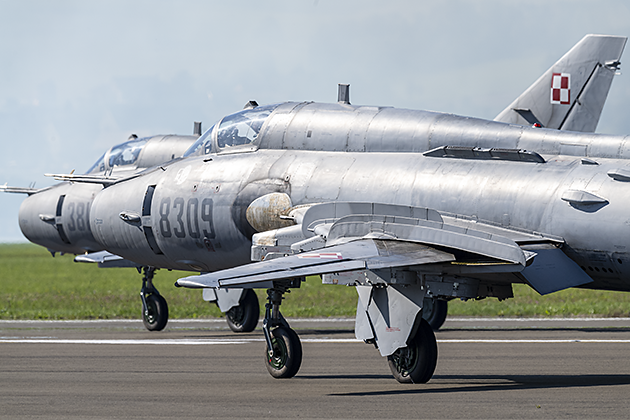
Amongst the highlights of this year’s AIR POWER were two Sukhoi Su-22M4 (NATO Code: FITTER K) fighter-bombers of the Sily Powietrzne (Polish Air Force). Poland is the only European country where this interesting aircraft from the Soviet-era is still in active service. Between 1984 and 1988 the Polish Air Force received a total of 110 aircraft of this type, including 90 single-seat Su-22M4 (including 10 Su-22M4R reconnaissance versions) and 20 double-seat Su-22UM-3K variants. After the end of the Warsaw Pact, the Poles kept their Su-22’s which are still in service (in contrast to all other former Eastern Bloc countries such as the Czech Republic, Slovakia, Hungary or Bulgaria). Polish Su-22’s have been modernized several times to meet increased demands and these updates have proven to be effective at least to some extent. Out of all aircraft originally delivered 32 were still in active service up until 2015 of which 18 aircraft (12 Su-22M4 and 6 Su-22UM3) are to undergo further upgrades so that they can continue to operate in Polish Air Force service until 2024/2025.
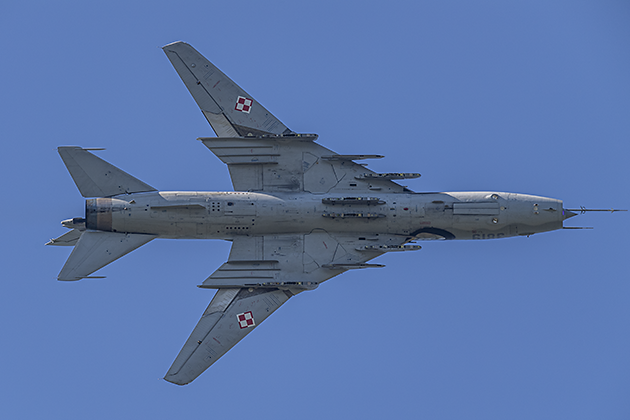
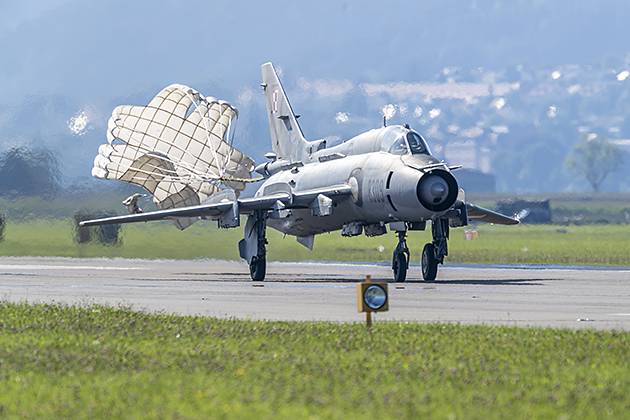
Of the original four Polish fighter-bomber wings (stationed at air bases in Pila, Powidz, Miroslawiec and Swidwin) only two squadrons remain, which are stationed at 21 BLT (Baza Lotnictwa Tacktycznego) in Swidwin. The Polish Armed Forces particularly appreciate the reliability and the relatively low maintenance requirements of the Su-22 compared to more modern aircraft. The Su-22M4 is powered by a single Lyulka AL-21F3 afterburning engine, which produces a dry thrust of 76.4 kN (109.9 kN with afterburner). This provides the Su-22M4 a top speed of just under Mach 1.9. Together with a bomb load of over 4,000 kg and a maximum range of up to 2,600 km (with additional tanks) the Sukhoi still maintains some impressive performance characteristics. This does not however hide the fact that the survivability of the Su-22 in a modern war is now quite questionable and for this reason the days of the Sukhoi Su-22M4 /UM3 are numbered. For this reason, it was a very special highlight to see the Su-22 not only in the static display but also in flight.
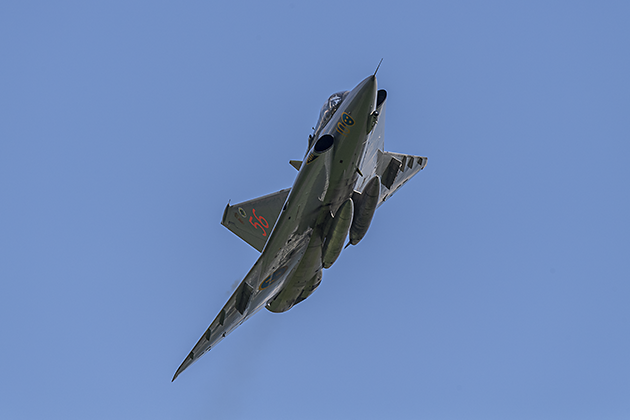
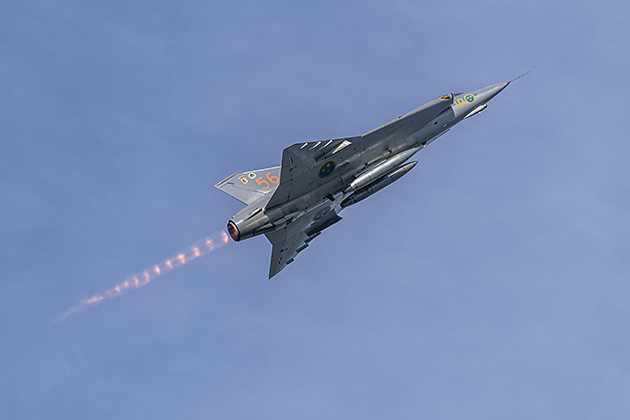
Another special highlight, especially for the Austrian audience, was a flight demonstration of a SAAB J-35J DRAKEN of the Swedish Air Force Historic Flight. The Austrian Flying Division was the last operator of this Swedish Double Delta fighter with Zeltweg Hinterstoisser AB being the last base where the DRAKEN was stationed (1987 – 2005). The Initial acquisition of 24 used J-35Ds by the Austrian Army was highly controversial. The entire history of the Austrian DRAKEN, the political background, the fierce and above all biased debates (as well as smear campaigns initiated by the largest Austrian daily newspapers) would provide enough material for a complete Hollywood series. How important the J-35Oe DRAKEN was for maintaining air sovereignty over Austria is quite unknown by most of the Austrian population even to this day. The same applies to its successor – the Eurofighter EF-2000 TYPHOON.
Originally, 24 aircraft were to be acquired however a flood disaster resulted in this number being revised down to 18 and later to 15
R. Kysela
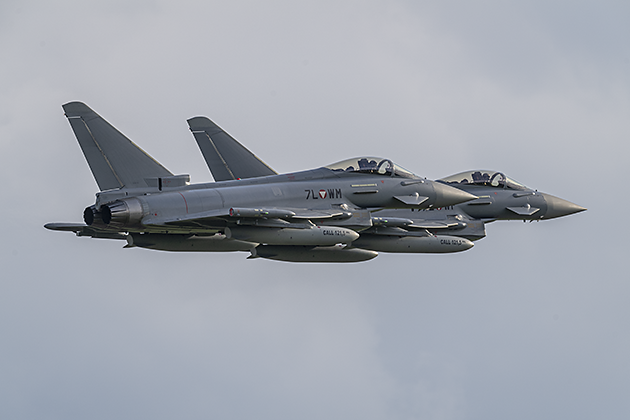
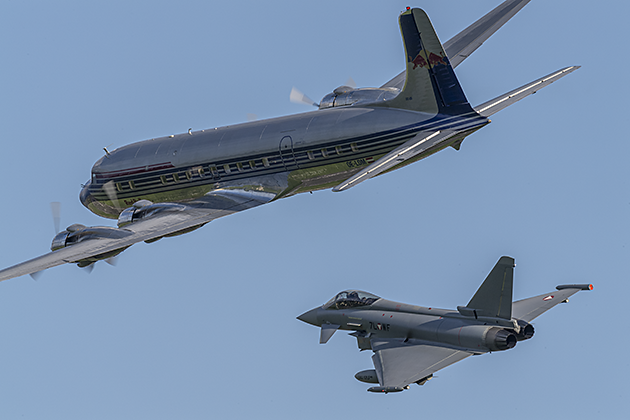
Following the end of the Draken era, Austria procured its first, truly modern interceptor in the form of the Eurofighter EF-2000. Unfortunately, not everything went smoothly here either. Originally, 24 aircraft were to be acquired however a flood disaster resulted in this number being revised down to 18 and later to 15. In the run-up to the contract there were inconsistencies with talk of bribery payments from the manufacturer Eurofighter Jagdflugzeug GmbH to politicians and lobbyists, this resulting in a parliamentary committee of inquiry being founded. At the moment, there is even consideration being given to totally replace the EF-2000 with another type for the medium term. Austria has the oldest models of the EF-2000 (Tranche I), a retrofit with the modern EuroDASS Praetorian self-protection system, as well as the ultra-modern EuroDASS PIRATE (Passive Infra-Red Airborne Track Equipment) infrared target detection system would cost one billion Euro according to media reports, this would be almost half of the already too scarce annual budget of the Austrian Armed Forces (the defence budget of the Alpine Republic amounts to just 0.58% of GDP!).
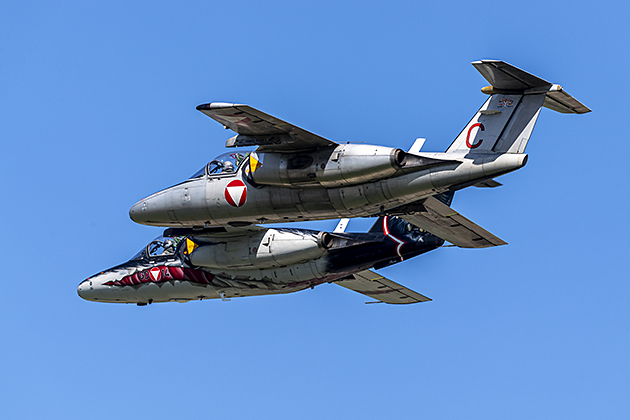
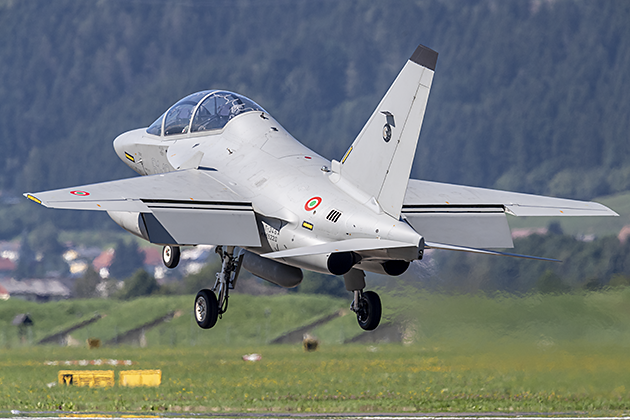
Speaking of budget – the Austrian Armed Forces, and in particular the Air Force Division, not only requires adequate funding to upgrade their fighter aircraft, but also additional funds to replace their ageing fleet of Saab 105Oe trainers. At the time of this report, all Saab 105Oe are grounded due to cracks discovered (during routine inspections) of the bolt connecting the tail unit to the fuselage. These bolts are not held in stock and must be fabricated new (including all the necessary acceptance and certification processes) so it will probably take some time before the Saab 105Oe can be returned to service. As these machines will soon reach the end of their life cycle (probably by the end of 2020) an early decision by politicians on successor models is urgently required! At AIR POWER 2019 interested spectators were provided, probably for the final time, an opportunity to admire the “Old Sweden” in its natural environment. A potential successor to the 105 was on static display at Zeltweg, the Leonardo M-346 MASTER which is a state-of-the-art advanced jet trainer based on a joint project between the Russian company Yakovlev and the Italian aerospace firm Leonardo. Following the end of the partnership (in 2000) Aermacchi (today Leonardo) went on to develop the M-346, while Yakovlev in turn developed the now current standard trainer of the Russian Air Force, the Yakovlev Yak-130 (NATO Code: MITTEN), this is why both aircraft look so confusingly similar. A key difference between the two however is that the M-346 utilises the more powerful Honeywell F124-GA-200 engines (each producing 27.80 kN of thrust) compared to the Progress AI-222-25 turbofans (each producing 24.5 kN of thrust) of the Yak-130).
Unfortunately for one of these old-timers there was a minor accident when a replica Swedish FMV Ö1 TUMMELISA went end over during landing coming to rest on its back.
R. Kysela
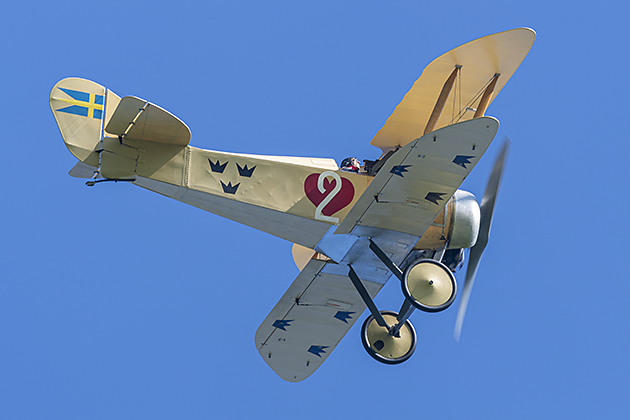
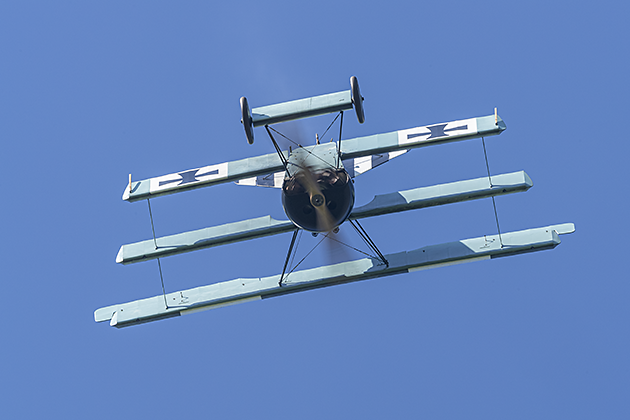
Not only modern (and not so modern) jets were to be seen at AIR POWER, but also present were a few highlights from a by gone era. Unfortunately for one of these old-timers there was a minor accident when a replica Swedish FMV Ö1 TUMMELISA went end over during landing coming to rest on its back. The pilot was able to leave the plane unscathed with damage to this small training plane of the 1920’s kept to a minimum. This TUMMELISA was built by the Swede Mikael Carlson who owns a grandiose collection of old-timer aircraft. In addition to the TUMMELISA, his small aircraft museum also has a Fokker Dr.1, a Fokker D.VII and as the latest acquisition, a Pfalz D.VIII. Although all are replicas, original engines and parts are used almost exclusively. If these are not available, the parts are reproduced true to the original. With his excellent machines, Mikael has been “THE” highlight at many European air shows for many years.
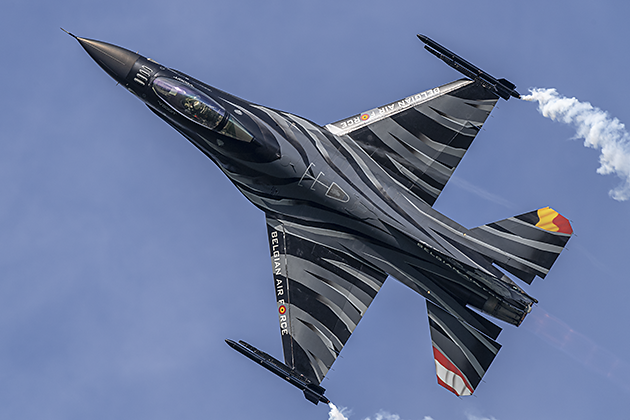
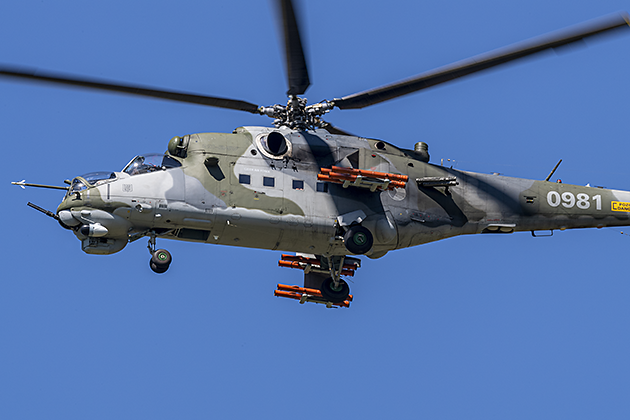
VERDICT: The question asked at the beginning of this report was whether AIR POWER 2019 was able to meet the expectations placed on it: this is answered with a very clear YES in this review. Once again, the Austrians have shown impressively how such an event should be held. Even if the weather did not play along as well as the numerous visitors and enthusiasts would have liked, the Austrian Federal Armed Forces, the RED BULL company and the province of STEIERMARK (STYRIA) can look back with great pride at a very successful event, in fact all other events could be seen as rather bland and boring in comparison. Even if we had a crystal ball to predict the future, any chance that AIR POWER will be a continued next year seems rather unlikely. The Austrian Armed Forces have enough work to do within the next few years to get out of their current precarious situation and without any reasonable financial means it will no longer be able to fulfil even its most primary mission (As stated by Minister Starlinger: “No, we are no longer able to protect”). Until these problems are addressed there will be no more flying events at Zeltweg – this will particularly be the case when the GREENS are part of Austria’s next government!
Robert Kysela / CHK6

